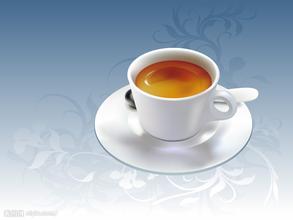A brief introduction to the flavor, taste and aroma characteristics of South American Ecuadorian coffee Galapagos coffee beans

Coffee in the Galapagos Islands has its own uniqueness. It was brought to the island around 1870. 150 years later, coffee varieties are still the original species of coffee grown at that time-the ancient bourbon species. It has never been bred by any artificial cross. And the coffee on the island is basically grown in the mountains about 500m above sea level. Friends who have seen our coffee bean series should know that the higher the altitude, the better the quality of coffee. Generally speaking, it is necessary to reach an altitude of 1700 to 2100 meters before it can be called high-quality coffee beans. Isn't this 500m a long way off? This is what makes Galapagos Coffee unique, because the archipelago is located at the confluence of cold currents in Peru in the south and warm equatorial currents in the north. Affected by the cold and warm ocean currents, a small ecological environment has been formed. The climate of 500m here is equivalent to that of 900m-1800 m inland. This terrain is very suitable for the growth of very hard coffee beans (SHB) with high acidity, and is also the key to the high quality of coffee.
The quality of Galapagos coffee is very good, and it is mainly exported to Scandinavia and other Nordic countries, so our people know little about it. As coffee is consumed by people all over the world, the world coffee industry is also developing towards a mass production model. A small-scale planting model like Galapagos actually limits its development, and if it does not expand its scale, it may eventually be forced to give up because of unprofitable profits. Coffee plantation owners here are also aware of this problem, gradually expanding the area of their estates in the early 1990s and making better use of their unique advantages.
Ecuador is one of the few countries in South America that produces both Arabica and Robbins. However, as the land suitable for Arabica coffee trees is decreasing, the production of Robbins coffee is gradually increasing. The best Arabica coffee comes from the Andes, especially the Chanchagu Valley (Chanchamgo Valley). The Andes are divided into two mountains, extending from south to north to central Ecuador.
Flavor: balanced acidity and fragrance
Suggested roasting method: medium to deep roasting, can be made into high-quality mixed coffee, suitable for various uses
Evaluation: general
The best Ecuadorian coffee is grown on St. Cristobal Island in the Galapagos Islands, which has the unique natural geographical conditions for giving birth to the best quality coffee in the world. A cup of Galapagos coffee, like the beautiful scenery of the Galapagos Islands, is sure to impress you.
In the mid-15th century, there were legends about enchanted mysterious islands among fishermen fishing in the western Pacific Ocean of South America. It is said that the islands can sometimes be seen clearly from a distance, but when the ship approaches, it disappears again; sometimes it looks like a galleon, sometimes it shows the shape of a witch. Fishermen call these islands "Devil Island", thinking that they may be ruled by demons like the sea banshees in the Odyssey. The island, which fishermen call "Magic Island", is now the Galapagos Islands.
In 1535, Frey Thomas de Belanga of Spain and others stumbled upon the Galapagos Islands. Thomas was born in 1487 on the Douro River in the province of Soria, Spain, and was the fourth bishop of Panama at that time. He was ordered to go to Peru. When his ship set sail from Panama on February 23, under the impact of a strong current, they were taken to the unknown sea, and on March 10, they discovered a small island in the Galapagos Islands. At that time, there were only two days of fresh water left on the ship, and the sailors landed in lifeboats and found a large number of seals, sea turtles, giant tortoises that could carry people, and iguanas that looked like venomous snakes, but they did not find fresh water, so they sailed to another larger island more than 20 kilometers away. As there was still no wind, it took them several days to get there. The water ran out quickly and they had to starve, including the horses on the boat without grass.
Features of Galapagos Islands Coffee:
The coffee produced in the Galapagos Islands (Galapagos Islands) is a treasure of coffee. It is of excellent quality and is grown without any chemicals.
Flavor: rich in taste, sweet in sour
Suggested baking method: medium baking
★★★: excellent
Galapagos Islands Coffee Market:
Because of the unique role of the Galapagos Islands in the course of history, the Ecuadorian government has designated the islands as a national park and is no longer allowed to reclaim the land for new agricultural land. and the introduction and use of chemical fertilizers, pesticides, herbicides and other chemical agents are strictly prohibited. Therefore, coffee in the Galapagos Islands is recognized as a natural product. St. Cristobal is a larger island in the Galapagos Islands (Galapagos Islands) and the only one in the archipelago with plenty of fresh water. At an altitude of 410m, there is a small lake called El.Junco, which forms streams along the rocks and volcanic rocks on the southern slope of the island, and mineral-rich fresh water moistens the land of St. Cristobal, keeping the soil moist and fertile. The local microclimate caused by the Humboldt current (HumboldtCurrent), strong equatorial sunlight and sharp temperature changes (43 degrees at sea level and 10-16 degrees above sea level) provide unique advantages for coffee producing areas in the Galapagos Islands:
Coffee is grown in San Cristobal (SaintCristobal). Arab bourbon coffee trees are planted in the Hasunda Coffee Garden (HaciendaElCafetal) in San Cristobal. The elevation of the plantation is between 140 and 275 meters above sea level, and the climate in this area is equivalent to that between 915 and 1830 meters inland. This gradient is very suitable for the growth of high acidity extra hard coffee beans (SHB), and is also the key to the high quality of coffee.
Ecuador is a country located in South America. Coffee beans are divided into two varieties: Galapagos and Gigante, both of which have the characteristics of large grains and heavy weight. Galapagos (Galapagos) is pronounced in Spanish and we translate it into Cologne in Chinese. It belongs to Ecuador nationally, but its coffee will not be named Ecuador, because although Galapagos belongs to Ecuador, it is located in the Pacific Ocean, more than 1100 kilometers away from the mainland and covering an area of more than 7500 square kilometers. it is an archipelago of 13 islands and 19 reefs solidified by undersea volcanic eruptions, stretching 1000 kilometers from the South American continent to the Pacific Ocean.
Galapagos (Galapagos)-Organic coffee from giant turtle island
Important Notice :
前街咖啡 FrontStreet Coffee has moved to new addredd:
FrontStreet Coffee Address: 315,Donghua East Road,GuangZhou
Tel:020 38364473
- Prev

A brief introduction to the history and culture of the origin and development of traditional raw bean treatment methods 90 + W2, H2, N2
90 + based on the original excellent raw beans, continue to be graded as follows: Level 7: single production area harvest. Rare varieties with fine taste and special flavor are selected by hand and then treated by NinetyPlus to reach the standard of more than 90 +; Level 12: harvested in a single production area. Negative forms such as must be recognized and indelible are used on the website.
- Next

A brief introduction to the unique history and culture of the origin and development of coffee in the Galapagos Islands
In 1875, 340 years after Freitoma de Belanga discovered the island, a native named Kovos came to St. Cristobal, where he established the Hasunda Coffee Garden and planted about 100 hectares of Arabian bourbon coffee trees. Since the plantation is located between 140m and 275m above sea level, the climate is equivalent to that of 915m ~ 1830 m in the interior.
Related
- Detailed explanation of Jadeite planting Land in Panamanian Jadeite Manor introduction to the grading system of Jadeite competitive bidding, Red bid, Green bid and Rose Summer
- Story of Coffee planting in Brenka region of Costa Rica Stonehenge Manor anaerobic heavy honey treatment of flavor mouth
- What's on the barrel of Blue Mountain Coffee beans?
- Can American coffee also pull flowers? How to use hot American style to pull out a good-looking pattern?
- Can you make a cold extract with coffee beans? What is the right proportion for cold-extracted coffee formula?
- Indonesian PWN Gold Mandrine Coffee Origin Features Flavor How to Chong? Mandolin coffee is American.
- A brief introduction to the flavor characteristics of Brazilian yellow bourbon coffee beans
- What is the effect of different water quality on the flavor of cold-extracted coffee? What kind of water is best for brewing coffee?
- Why do you think of Rose Summer whenever you mention Panamanian coffee?
- Introduction to the characteristics of authentic blue mountain coffee bean producing areas? What is the CIB Coffee Authority in Jamaica?

